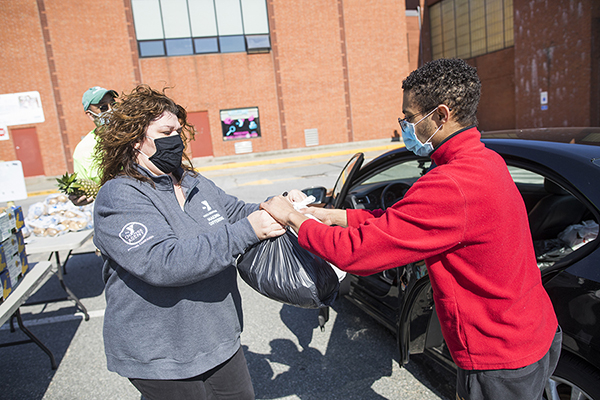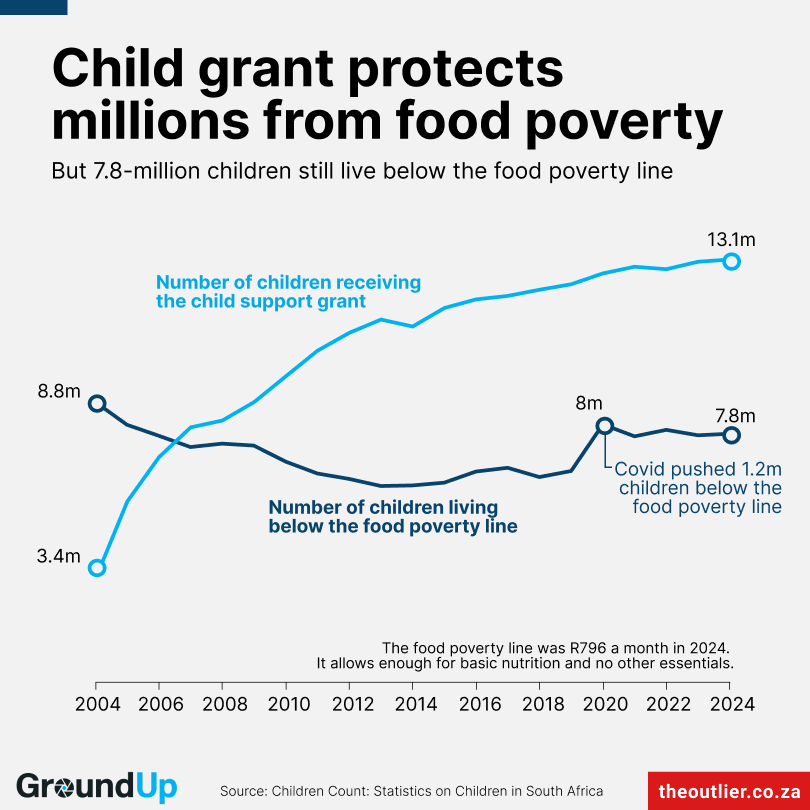Mass. food banks brace for double hit of federal food cuts, benefit changes – WBUR

Report on Food Security Challenges in Massachusetts and Implications for Sustainable Development Goals
Introduction: A Threat to SDG 2 (Zero Hunger)
Recent federal policy changes, including significant cuts to food supply programs and stricter eligibility for nutritional assistance, are posing a substantial threat to food security in Massachusetts. These developments directly challenge the state’s progress toward achieving key Sustainable Development Goals (SDGs), most notably SDG 2 (Zero Hunger), which aims to end hunger and ensure access to safe, nutritious, and sufficient food for all. The situation also has critical implications for SDG 1 (No Poverty), SDG 3 (Good Health and Well-being), and SDG 10 (Reduced Inequalities).
Analysis of Federal Policy Impact on Food Assistance
Reduction in Federal Food Supplies
Regional food banks in Massachusetts are experiencing a severe reduction in food sourced from the U.S. Department of Agriculture (USDA). This directly undermines SDG 2 by limiting the availability of essential food items.
- The Worcester County Food Bank reported that federal food shipments, which previously constituted half of its supply, have been drastically reduced.
- Cancelled shipments include thousands of dollars worth of nutritious items such as fresh milk, cheese, meat, and eggs, impacting efforts related to SDG 3 (Good Health and Well-being).
- Data indicates Massachusetts is projected to receive less than half the amount of federal food in the current fiscal year compared to previous years.
Increased Restrictions on the Supplemental Nutrition Assistance Program (SNAP)
The federal government has implemented more stringent requirements for SNAP, creating significant barriers for vulnerable populations and increasing inequality, in direct opposition to SDG 1 (No Poverty) and SDG 10 (Reduced Inequalities).
- Stricter Work Requirements: New laws mandate more stringent work requirements for benefit recipients, potentially disqualifying individuals who are unable to meet them.
- Increased State Financial Burden: States are now required to cover a higher share of SNAP costs, which could place an over $300 million annual burden on Massachusetts by 2027.
- Bureaucratic Hurdles: Advocacy groups like the Massachusetts Law Reform Institute (MLRI) warn that these changes will create administrative difficulties, potentially leading to eligible individuals being improperly cut off from benefits.
Consequences for State-Level Food Security and SDG Targets
Escalating Pressure on the Emergency Food System
The combination of reduced federal supplies and increased demand from those losing SNAP benefits places unprecedented strain on the state’s emergency food network, jeopardizing the core tenets of SDG 2.
- The four regional food banks in Massachusetts, serving nearly 900,000 people monthly, are all impacted by millions of dollars in federal cuts.
- Food banks are depleting their financial reserves to purchase food, a strategy deemed unsustainable in the long term.
- The Greater Boston Food Bank estimates a potential 50% increase in demand for food banks and pantries.
- An estimated $98 million per year would be needed for the emergency food system to compensate for the loss in SNAP benefits alone.
Projected Impact on Vulnerable Populations
The policy changes are expected to deepen poverty and food insecurity for a significant portion of the state’s population, hindering progress on SDG 1, SDG 2, and SDG 10.
- Over one million people in Massachusetts are enrolled in SNAP.
- An estimated 175,000 of these recipients are at risk of losing some or all of their benefits due to the new law.
- This loss of benefits will force more individuals and families to rely on an already over-strained food pantry system.
State and Local Responses: Upholding Partnerships for the Goals (SDG 17)
Mitigation Efforts and Future Outlook
In response to the federal shortfalls, state and local entities are attempting to form stronger partnerships to mitigate the crisis, reflecting the principles of SDG 17 (Partnerships for the Goals). However, these efforts may not be sufficient to close the gap.
- Governor Maura Healey has established an Anti-Hunger Task Force to advise on strategies to counteract the impact on SNAP and other food programs.
- The state budget includes increased funding for the emergency food system, though it does not fully compensate for the federal cuts.
- Food bank leaders are engaging in contingency planning and anticipate a greater reliance on private donors to meet future demand.
- The current situation is described by food bank leadership as the “most serious test” for the state’s emergency food network, highlighting the fragility of progress toward the Sustainable Development Goals in the face of shifting federal policy.
1. Which SDGs are addressed or connected to the issues highlighted in the article?
SDG 2: Zero Hunger
- The article’s primary focus is on food insecurity in Massachusetts, detailing the challenges faced by food banks and the people who rely on them. It discusses federal cuts to food supplies and stricter requirements for SNAP (Supplemental Nutrition Assistance Program), which directly threaten the goal of ending hunger and ensuring access to food. The entire narrative revolves around the struggle to provide sufficient food for vulnerable populations.
SDG 1: No Poverty
- The article links food insecurity directly to poverty. SNAP is a social protection program for low-income individuals. The text states that changes to the program will create “bureaucratic hurdles for those who get SNAP” and that the system is for people who “need more food than their benefits can buy.” This highlights the connection between poverty, social protection systems, and access to basic necessities like food.
SDG 17: Partnerships for the Goals
- The article illustrates the complex interplay between different entities. It describes actions (and inactions) by the federal government (U.S. Department of Agriculture), the state government (Massachusetts Department of Agricultural Resources, Department of Transitional Assistance, Governor’s Anti-Hunger Task Force), and civil society organizations (Worcester County Food Bank, Greater Boston Food Bank, Food Research and Action Center). The reliance on donors (“We’re going to look to our donors a lot”) also points to the need for multi-stakeholder partnerships to address the funding gaps.
2. What specific targets under those SDGs can be identified based on the article’s content?
Targets for SDG 2: Zero Hunger
- Target 2.1: By 2030, end hunger and ensure access by all people, in particular the poor and people in vulnerable situations, including infants, to safe, nutritious and sufficient food all year round.
- The article directly addresses this target by discussing the nearly 900,000 people served by food banks monthly and the over one million people on SNAP in Massachusetts. The cuts to food supplies and SNAP benefits directly jeopardize year-round access to sufficient food for these vulnerable groups.
Targets for SDG 1: No Poverty
- Target 1.3: Implement nationally appropriate social protection systems and measures for all, including floors, and by 2030 achieve substantial coverage of the poor and the vulnerable.
- The article focuses on the SNAP program, which is a key social protection system in the U.S. The discussion of “more stringent requirements to qualify for food stamps” and the risk of 175,000 people losing benefits indicates a direct impact on the implementation and coverage of this social protection system for the poor.
Targets for SDG 17: Partnerships for the Goals
- Target 17.17: Encourage and promote effective public, public-private and civil society partnerships, building on the experience and resourcing strategies of partnerships.
- The article highlights the need for such partnerships. The federal government’s reduced support forces state governments, non-profits (food banks), and private donors to collaborate to fill the gap. The creation of the Governor’s “Anti-Hunger Task Force” is a clear example of an attempt to build a public-civil society partnership to mitigate the crisis.
3. Are there any indicators mentioned or implied in the article that can be used to measure progress towards the identified targets?
Indicators for Target 2.1 (End Hunger)
- Prevalence of food insecurity: The article provides several data points that serve as indicators:
- The number of people served by the four regional food banks: “nearly 900,000 people each month.”
- The projected increase in demand for emergency food services: “as much as a 50% increase in demand for food banks and pantries.”
- The number of people at risk of losing food assistance: “Roughly 175,000 of them could be at risk for losing some or all of their [SNAP] benefits.”
Indicators for Target 1.3 (Social Protection Systems)
- Proportion of population covered by social protection systems: The article provides clear numbers that can be used as indicators for the coverage and potential reduction of SNAP:
- Total number of people on SNAP in Massachusetts: “More than a million people.”
- The number of beneficiaries at risk due to policy changes: “Roughly 175,000 of them could be at risk.”
Indicators for Target 17.17 (Partnerships)
- Financial flows and resource mobilization: The article quantifies the financial challenges and responses, which are indicators of resource mobilization from different partners:
- Reduction in federal support: “millions of dollars in federal cuts to food supplies and grant programs.”
- Financial gap for the emergency food system: “$98 million per year to make up for the loss.”
- Increased financial burden on the state: “put Massachusetts on the hook for over $300 million dollars per year.”
- Formation of partnerships: The creation of the “Anti-Hunger Task Force” is a qualitative indicator of partnership building.
4. Table of SDGs, Targets, and Indicators
| SDGs | Targets | Indicators Identified in the Article |
|---|---|---|
| SDG 2: Zero Hunger | 2.1: End hunger and ensure access for all people to safe, nutritious and sufficient food all year round. |
|
| SDG 1: No Poverty | 1.3: Implement nationally appropriate social protection systems and achieve substantial coverage of the poor and vulnerable. |
|
| SDG 17: Partnerships for the Goals | 17.17: Encourage and promote effective public, public-private and civil society partnerships. |
|
Source: wbur.org

What is Your Reaction?
 Like
0
Like
0
 Dislike
0
Dislike
0
 Love
0
Love
0
 Funny
0
Funny
0
 Angry
0
Angry
0
 Sad
0
Sad
0
 Wow
0
Wow
0








































































